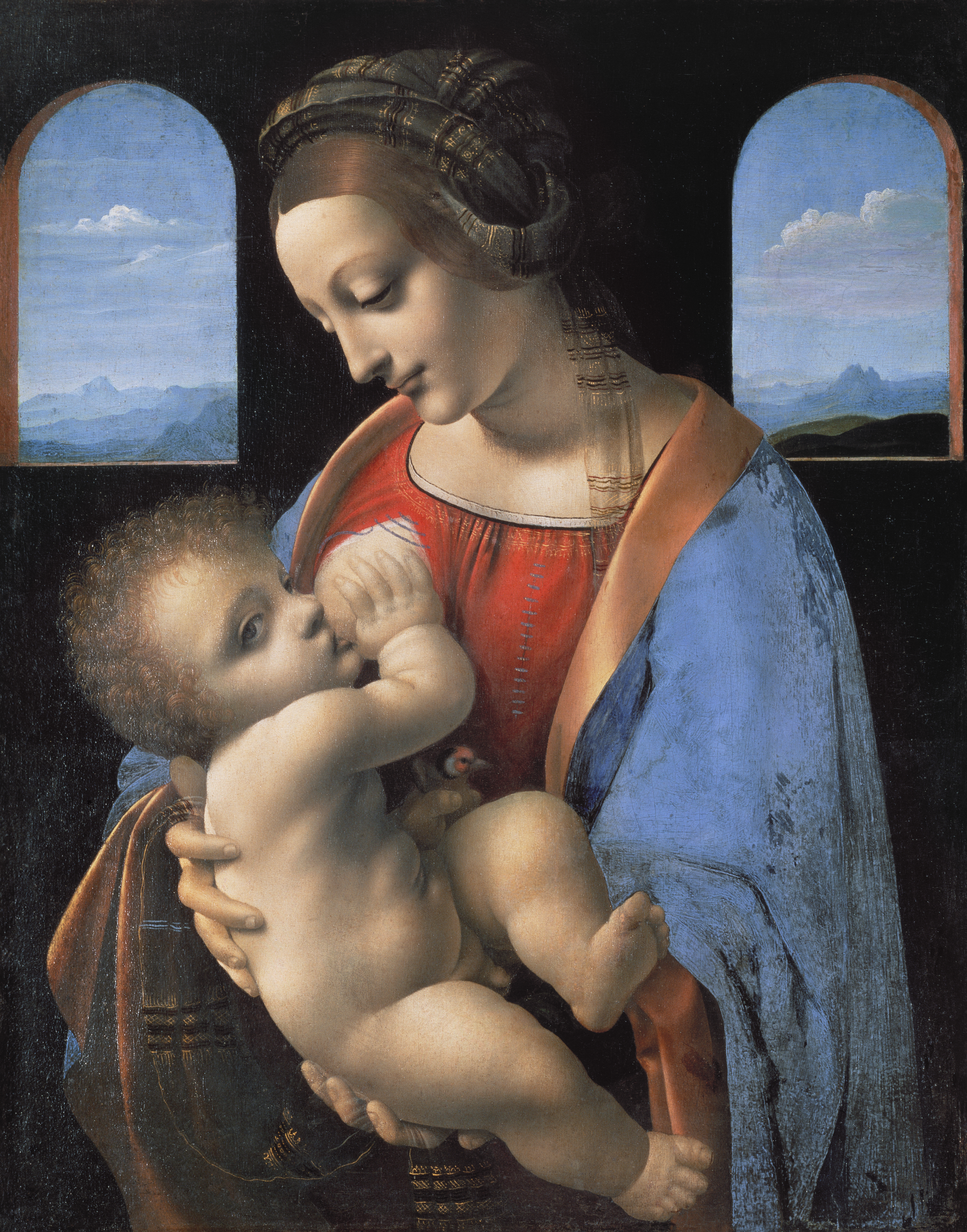Art of the Day
11-20-2024 Pacific Time (PT)
The "Madonna Litta" is a renowned Renaissance painting attributed to either Leonardo da Vinci or one of his followers. The exact authorship is still a subject of debate among art historians. The painting is believed to have been created around the end of the 15th century, during the Italian Renaissance.
The composition features the Virgin Mary and the Christ Child, a common subject in religious art of the time. In the "Madonna Litta," Mary is depicted with a serene expression, looking down at the infant Jesus, who is nestled close to her. The mother and child are set against a dark background, emphasizing their intimate connection.
One distinctive feature of the "Madonna Litta" is the tender interaction between Mary and Jesus. The artist captures a sense of maternal affection and warmth, with Mary's gentle gaze and the child's nestled position. The use of light and shadow contributes to the overall atmosphere of tranquility.
The painting is named after the Litta family, who owned it for a significant period. It is currently housed in the Hermitage Museum in Saint Petersburg, Russia. Despite the ongoing debates about its authorship, the "Madonna Litta" remains an exquisite example of Renaissance art, showcasing the artist's mastery of composition, light, and emotional expression.
The author generated this text in part with GPT-3, OpenAI’s large-scale language-generation model. Upon generating draft language, the author reviewed, edited, and revised the language to their own liking and takes ultimate responsibility for the content of this publication.